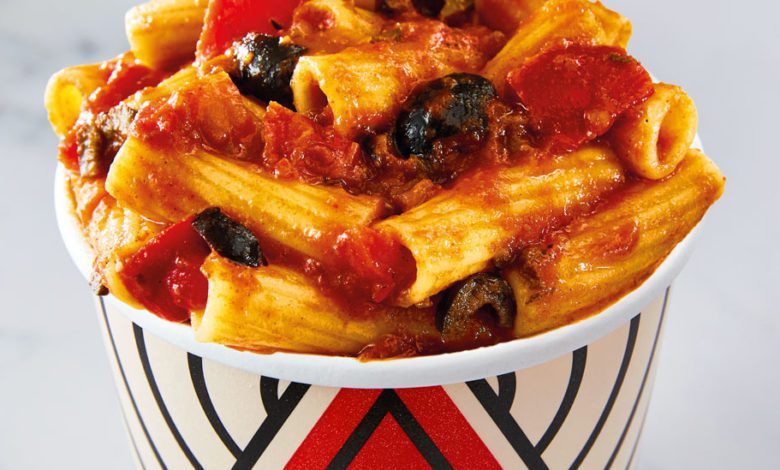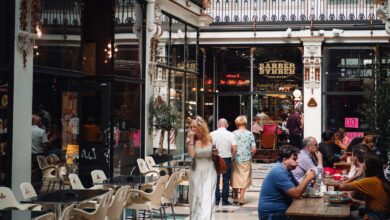Penne for your thoughts: Coco di Mama’s plans for expansion
Catering Today talks to Sara McKennedy, commercial brand director at Coco di Mama. McKennedy talks about Coco’s expansion outside of London, how the company knew when it was time to expand and the future of the brand.

Register to get 1 free article
Reveal the article below by registering for our email newsletter.
Want unlimited access? View Plans
Already have an account? Sign in
Could you tell me a little bit about the history of Coco di Mama?
Coco di Mama has been around for 11 years now and although we still like to think of ourselves as a bit of a startup, we were founded on Fleet Street, in 2011. The concept has always been about great Italian food, which is the most popular cuisine. We were most famous when we started Coco for pasta and coffee. Since then the brand has evolved a lot and we’ve grown from being a couple of sites in London, to now having 15 flagship stores.
What made you confident that the company was ready to expand outside of London?
A couple of things. One, because we’ve done the delivery kitchen expansion, where we’ve put Coco di Mama in every nook and cranny of the UK. So you can now get Coco in Aberdeen, in Truro, everywhere and so that gave us a lot of confidence because the brand, without high brand awareness, already did really well in towns and cities where our core demographic already was. So where there was a really strong amount of young professionals or students we were doing really well. There was a really high correlation between student towns so when they were all popping up as the top trading sites we were like “there’s something in this”. Also we’ve opened up a motorway services site on the M6 north so that was another proof point that the brand could do well in places where the brand awareness wasn’t already high
What drew you to Reading?
As our first non-London flagship store, we were looking for a place that we ideally would have some brand awareness already. So we’ve had the delivery kitchen running there for two years, plus it’s quite commutable to London. So we do have customers who are going in and out of London or in Reading. So brand awareness isn’t starting from scratch. We also wanted it to be a good mix of demographics. Our core demographics are young professionals and students, but we also really wanted to prove and test the brand on a high street. So where you have retail shoppers, older shoppers, because if you just do the same thing everywhere, we won’t learn either.
Do you think that the market and the customer base outside of London is different compared to in London?
We’ve already learned quite a lot in a week. What we’ve learned is in London, it’s predominantly takeaway. On Reading High Street, it’s predominantly dine-in, and it’s almost an exact flip. You still have peaks and troughs of trade, it’s a lot more even when you come out of the city of London. So in London between the hours of 12:30 and 1:30, is where we do most of our business, [in Reading] it’s a lot more spread throughout the day. It’s important to be able to attract people who want to come in for a coffee and a cake, and sit in a nice place too. So it’s about how do you make the dining experience more comfortable on the high street.
Breakfast isn’t such a big thing in the regional high street. We could just still be building and driving awareness of that but less people are on the go looking for a hot breakfast in the morning. It’s either brunch at the weekends, or lunch later on in the day. Also a broader mix of customers. So you can still see the Coco customer when they’re coming in but you can also see different types of customers coming in and that’s really fun to see them experience it for the first time.
What do you view as your biggest challenges for expansion and how do you plan to overcome them?
I think one of the biggest challenges for us will be learning how to address the new opportunities without changing what the brand is. You can’t become all things to all people to try to win every customer and every occasion. So which [opportunities] are the ones that we do want to flex to because they’re really important and do we adapt the menu, store design, etc, to play in them? And which ones do we say okay, well that might be an opportunity, but we’re still not going to do it, because it would take the brand too far from what our core is. So that’s what we think will be a challenge.
How does more flexible working like WFH etc balance with you trying to put more of a focus on office catering?
I think we were still seeing it as a similar size of our business as it was before and, we’re still seeing customers that we had before Covid coming back and ordering in a similar frequency. So whereas people before maybe were ordering in for important meetings and board meetings I think it’s now becoming more of a regular thing.
Take our office, for example, we get office catering every Tuesday and every Thursday, and we didn’t do that before Covid. And that’s because it brings people together when they are in, everyone gets around the reception and has breakfast together and it’s just something that was trialled and seems to have stuck. So I think a lot of other companies are doing the same to try and encourage their employees to want to come back into work, enjoy it, and spend more quality time together when they are back.
Where do you think the company will be in five years?
My hope for Coco is that we become a true nationwide brand. At the moment we have small, proof points and nationwide, we’ve got the delivery kitchens, we’ve got motorway services, we’ve got some retail, but what I mean by that is I would love to see Coco stores, flagship stores being in the high streets all over all over the UK because from that everything else grows.







